Pricing Guides & Dictionary of Makers Marks for Antiques & Collectibles

ART DECO PORCELAIN, CHINAWARE, POTTERY & TABLEWARE:
Makers’ marks & Appraisal values
Join the most updated and complete collectibles research online - Learn more...
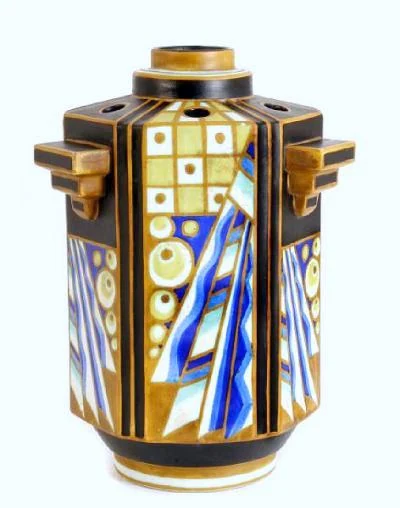 ART DECO is essentially a decorative style that first appeared around 1900 and grew to full force around the late-1910s, dominating the Decorative Arts until about the mid-1940s. Its presence permeated several aspects of art, architecture, industrial design, fashion, and all sorts of crafts, including making its distinct mark on Porcelain, Pottery, and Chinaware. It is characterized by its use of mostly straight lines or symmetrical shapes and of employing primarily strong and solid colors, thus forming striking bold visual motifs.
ART DECO is essentially a decorative style that first appeared around 1900 and grew to full force around the late-1910s, dominating the Decorative Arts until about the mid-1940s. Its presence permeated several aspects of art, architecture, industrial design, fashion, and all sorts of crafts, including making its distinct mark on Porcelain, Pottery, and Chinaware. It is characterized by its use of mostly straight lines or symmetrical shapes and of employing primarily strong and solid colors, thus forming striking bold visual motifs.
The Art Deco style can be said to be in vivid contrast to the free-flowing Art Nouveau aesthetic movement that appeared on the scene a few decades earlier. It is also regarded as the most likely forerunner of Modernism that had its peak in the 1950s – 1960s. Although this timeline suggests a general indication as to the predominance of each style, in reality, all of these decorative styles co-existed and overlapped, sometimes even combined to some extent with some examples, and are still apparent in all walks of life to this date. Basically, most artisans and designers in Europe & USA gave emphasis on one or the other based on their clientele and other factors so as to follow current trends. Very few were strict adherents to any particular style, and those consisted primarily of a few studios or ateliers or individual modelers scattered in Central Europe and France.
The epitome of the application of the Art Deco style in Decorative Arts is the Vienna Workshop [Wiener Werkstätte]. Established in 1903, it employed several master designers & modelers that were true and absolute proponents of this genre. Well before finally closing its doors in 1932, this industrious studio had already managed to become one of the most prolific and enthusiastic producers of items in the Art Deco style on all kinds of avenues, including Interior Design, Textiles, Fine Art Paintings, Metalware, Silver & Jewelry, Porcelain & Chinaware, Glass & Crystal, and even Woodwork and Mixed Media. For more on this studio, please see our article on The Vienna Workshops - Wiener Werkstätte.
In other regions of the world and specifically in Great Britain for Porcelain, Tableware, or Pottery, the most notable examples of companies full-heartedly adopting the Art Deco style, at least for a period, include Royal Doulton, Minton, Copeland-Spode, Worcester Royal Porcelain, Carlton Ware by Wiltshaw & Robinson, Crown Devon [aka S. Fielding & Co.], John Beswick and many others, but to a lesser extent. To identify makers’ marks and read more on each company, please see our Ceramics marks guides.
Unlock the true value of your collection with our comprehensive research guides from identifying makers' marks to appraising all kinds of antiques and collectibles, including items featured in this article.
Our up-to-date information will give you an accurate understanding of your items' worth. Don't miss out on this valuable resource - visit our research tools today!
In addition to some examples shown below on this page, you can also search our price guide for your own treasures.
Examples of related items from our Price Guides
-
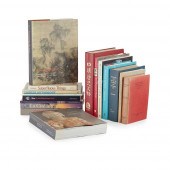 [A PRIVATE SCOTTISH COLLECTION, EDINBURG
[more like this]
[A PRIVATE SCOTTISH COLLECTION, EDINBURG
[more like this]
-
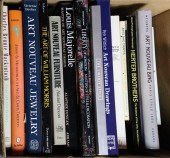 LARGE GROUP OF ART NOUVEAU, JUGENDSTIL,
[more like this]
LARGE GROUP OF ART NOUVEAU, JUGENDSTIL,
[more like this]
-
 ETHEL MAGAFAN (1916-1993) AMERICANEthel
[more like this]
ETHEL MAGAFAN (1916-1993) AMERICANEthel
[more like this]
-
 COLLECTION OF ART REFERENCE BOOKS
ON ASI
[more like this]
COLLECTION OF ART REFERENCE BOOKS
ON ASI
[more like this]
-
 BOOKS ON THE ART DECO PERIOD, GROUP OF 7
[more like this]
BOOKS ON THE ART DECO PERIOD, GROUP OF 7
[more like this]
-
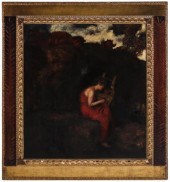 FRANZ STUCK (1863-1928) EXHIBITED OIL ON
[more like this]
FRANZ STUCK (1863-1928) EXHIBITED OIL ON
[more like this]
-
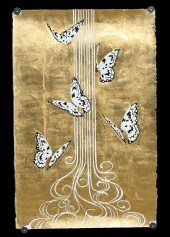 ALENA VAVILINA- BUTTERFLIES #30 W/ GOLD
[more like this]
ALENA VAVILINA- BUTTERFLIES #30 W/ GOLD
[more like this]
-
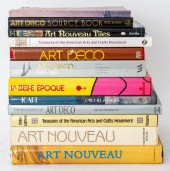 19TH / 20TH CENTURY DEC ARTS BOOKS, 12 L
[more like this]
19TH / 20TH CENTURY DEC ARTS BOOKS, 12 L
[more like this]
-
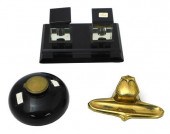 TWO ART DECO INKWELL DESK SETS AND AN EA
[more like this]
TWO ART DECO INKWELL DESK SETS AND AN EA
[more like this]
-
 CHARLES WILLIAM DAHLGREEN, ILLINOIS, IND
[more like this]
CHARLES WILLIAM DAHLGREEN, ILLINOIS, IND
[more like this]
-
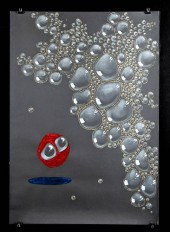 A. VAVILINA MIXED MEDIA W/ GOLD LEAF - B
[more like this]
A. VAVILINA MIXED MEDIA W/ GOLD LEAF - B
[more like this]
-
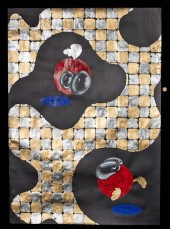 A. VAVILINA MIXED MEDIA W/ GOLD & SILVER
[more like this]
A. VAVILINA MIXED MEDIA W/ GOLD & SILVER
[more like this]
There are many more auction results available to our members...





